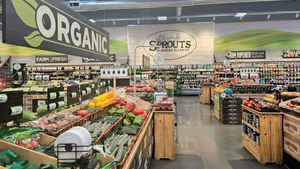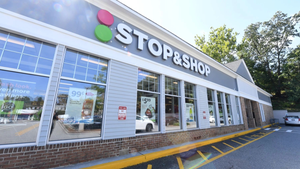Busy consumers open to new ways of grocery shoppingBusy consumers open to new ways of grocery shopping
Online ordering/delivery, meal kits become preferred solutions for some
May 1, 2018

Consumers are embracing new grocery shopping options such as online ordering/delivery and meal kits as they navigate in-store and digital channels, a study from media specialist Valassis reveals.
Of 1,000 U.S. adults surveyed, 7% of all shoppers said they order groceries weekly online. But that figure climbs to 14% for parents, 12% for Millennials and 15% for Millennials with children, according to the Valassis 2K18 Coupon Intelligence Report, released Monday.
Five percent of all respondents said that once a week they order a meal kit online that’s delivered to their home, compared with 10% of parents, 10% of Millennials and 14% of Millennials with kids.
Among those ordering groceries online, in-store pickup was a preferred option. Eight percent of all shoppers polled said they order groceries online from a local retailer and pick them up at the store, versus 17% of parents, 14% of Millennials and 20% of Millennials with children.
Six percent of all consumers order online from a local store and have their groceries delivered, a figure that rises to 10% for parents, 11% for Millennials and 13% for Millennials with kids.
“The path to purchase for grocery items is no longer a static and ritual journey,” Curtis Tingle, chief marketing officer of Livonia, Mich.-based Valassis, said in a statement. “From home delivery services to the growing presence of organic items, emerging channels and trends are changing the way shoppers buy and, in turn, how brands reach and activate their target audiences.”
In terms of shopping for food, 73% of survey respondents described themselves as an in-store shopper and 18% as an online shopper. Consumers seemed more apt to buy non-edible products online. Twenty-one percent described themselves as online shoppers for household goods, and 20% did so for health and beauty aids. Sixty-one percent and 57% of consumers, respectively, said they shopped in stores for those two categories.
“Consumers are turning to newer ways — ordering groceries online, using meal kits — to help manage grocery shopping and meal preparation amidst increasingly busy schedules,” the Valassis report said. “While in-store shopping still accounts for the majority of grocery spend, online shoppers are driving growth in the use of options such as meal kits.”
Online shoppers exhibited more time constraints and a greater affinity for convenience. Thirty-five percent of all respondents said they value convenience and saving time over saving money, compared with 70% of online shoppers. Likewise, 24% of all consumers said they don’t have much time to plan or do their shopping versus 52% for online shoppers.
“Approximately 20% of our respondents are primarily online shoppers. These consumers are more likely to be motivated by convenience and a need to save time,” according to the study. “On occasion, this need will even drive their brick-and-mortar store selection. For example, more than half of online shoppers say they shop retailers such as dollar, drug and convenience stores because they can quickly find what they need.”
Fifty-five percent of all those polled said they try to shop at local or neighborhood stores, and 36% shop at stores providing a unique or special experience — percentages that trend higher for respondents with children.
Thirty-three percent of all shoppers reported that they buy only or mostly organic and natural products, compared with 48% of parents, 50% of Millennials and 60% of Millennials with kids.
Looking at frequency of fill-in shopping, the study found that 6% of respondents make fill-in trips daily, 22% do so several times a week and 37% do so once a week. For stock-up purchases, 9% of consumers said they do such trips several times a week, 28% do so once a week and 31% make these trips once a month.
Shoppers, too, are taking advantage of a range of options to get more value, Valassis said. Overall, 69% save money with print, digital media and/or loyalty cards. Fifty-three percent said they use print coupons, 36% use digital coupons and 25% use loyalty cards.
Use of mobile savings apps has climbed steadily as well. Of those surveyed, 56% said they use grocery, drug, mass and/or supercenter savings apps, up from 51% in 2017 and 38% in 2016. Forty-three percent now use an in-store shopping rewards app, compared with 39% in 2017 and 29% in 2016.
“Consumers are increasingly looking for convenience and unique shopping experiences, as well as deals and coupons,” Tingle added. “Brands and retailers that offer these dimensions of value on a consistent basis across a multitude of channels will ultimately see the greatest ROI.”
About the Author
You May Also Like



.webp?width=300&auto=webp&quality=80&disable=upscale)


